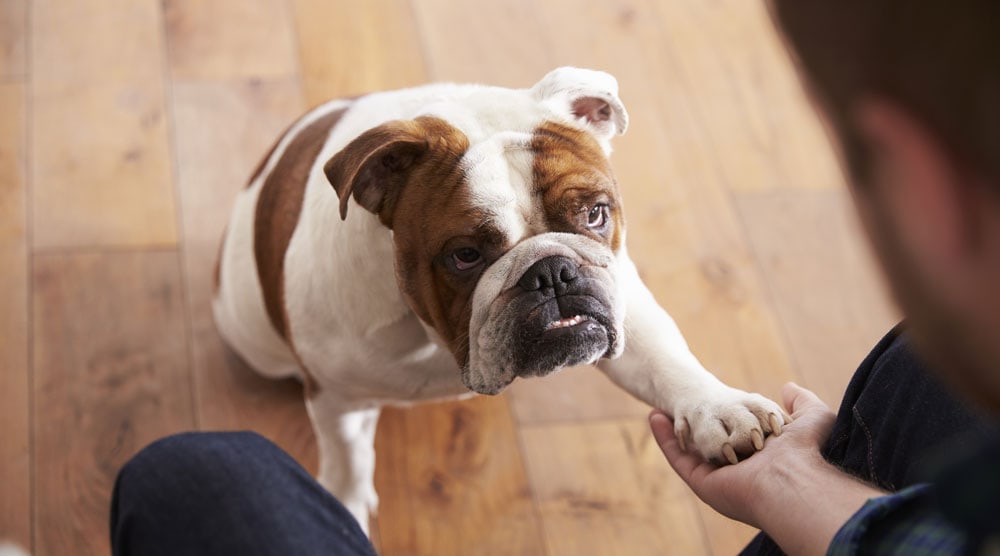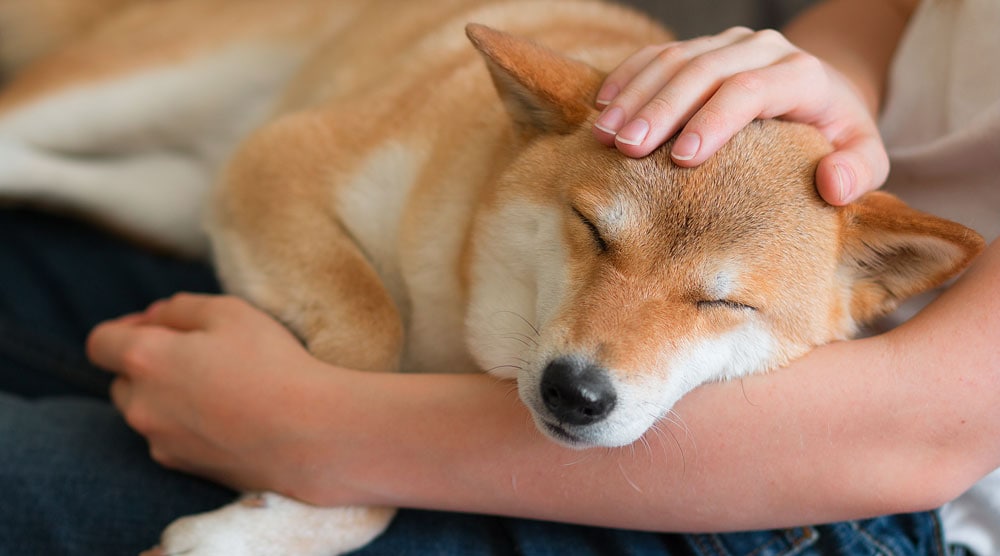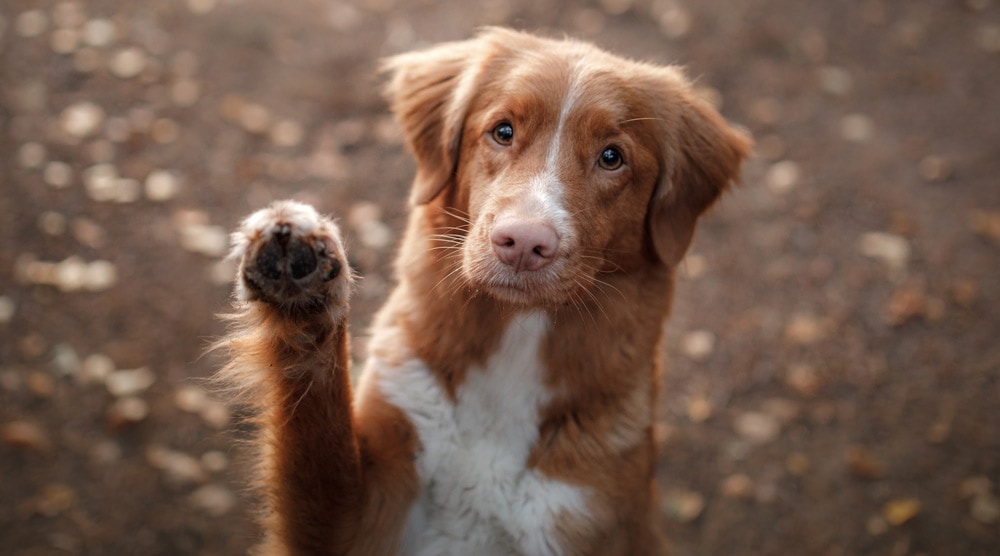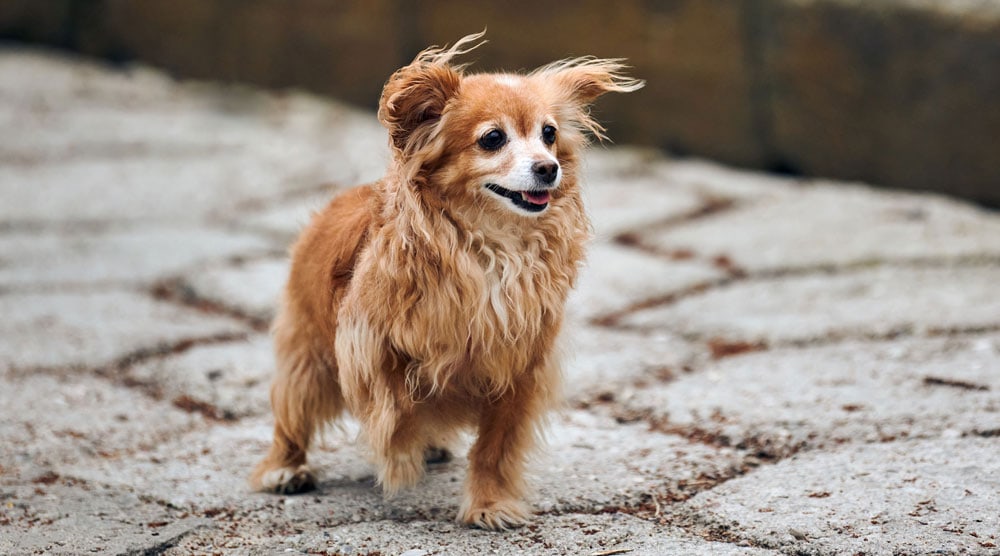“Why does my dog stretch on me?” is a common question. It’s easy to see why, as this behaviour can seem strange to us humans.
The simplest explanation is that dogs love to stretch. And, if you happen to be in a convenient position, they might use you as part of their stretching routine!
In most cases, this behaviour is a sign of trust, relaxation, or greeting. It’s nothing to worry about – and certainly not a sign of “dominance” (a theory of dog behaviour that has been thoroughly debunked).
Stretching on you could also make it easier to sink into a deep stretch. If you’ve ever used a sofa or wall to help with stretching, you’ll know exactly what I mean.
Let’s take a closer look at why a dog might stretch on you and what this behaviour means.
Contents
Why Do Dogs Stretch?

It’s normal for dogs to stretch throughout the day, particularly when they first wake up. It’s a healthy habit that provides a range of benefits.
For example, stretching releases muscle tension, reduces anxiety and keeps the body ready for movement. These effects were vital for wild dogs and the instinct remains in our domestic pets.
Stretching also feels good! When a dog stretches, the increased blood flow clears waste products from muscles. Stretching also relieves stress and releases rewarding endorphins, making it a self-reinforcing activity.

When Does Stretching Indicate A Medical Problem?
Stretching is usually not a symptom of illness or injury. But if your dog’s stretching has become more frequent, intense, or unusual, it could be due to a medical problem.
Some conditions that can cause a dog to stretch include:
- Abdominal pain. Pain in the abdomen can be caused by a variety of medical issues, including the life-threatening condition known as bloat. Dogs with abdominal pain often stretch in the “prayer” position and may arch their back. You should seek immediate veterinary care if your dog might be suffering from abdominal pain.
- Pancreatitis. Pancreatitis is a common condition caused by inflammation in the pancreas. The dog may stretch to try and relieve pain in the area. Other symptoms include diarrhoea, lethargy, vomiting, and reduced appetite. Pancreatitis is a serious condition that requires urgent medical care.
- Stress. Stretching is a natural stress reliever, so dogs might stretch more often when they are anxious.
You should always contact a vet if you notice changes to your dog’s stretching behaviour. For more information, read our guide to why a dog might stretch a lot.
What Does It Mean When Your Dog Stretches On You?
1. You’re A Convenient Stretching Tool!
A common reason for this behaviour is that stretching on you provides greater leverage. This allows the dog to generate a deeper and more enjoyable stretch.
For example, your dog might use your leg to keep their front paws in position, allowing a relaxing stretch through the shoulders and upper body. If the floors are slippery, your clothes may also make it easier to maintain grip during the stretch.
2. As A Form Of Greeting
Have you noticed your dog often stretches when you return from leaving the house? Or when you first see them in the morning?
Some dogs use a deep stretch as a way of greeting people they trust. The stretch usually involves sinking deep into a “bowed” position, and is sometimes followed up with stretching the back legs.
In most cases, dogs stretching as a greeting will just use the floor. But if you happen to be nearby, they might stretch on you as a way to say “hello”.
3. To Get Your Attention
Stretching on you might start because your dog actually wants to loosen their muscles, but over time it can become a reinforced habit.
The reason is simple: it’s hard not to give your dog attention when she stretches on you!
Unfortunately, even giving your dog a quick stroke can quickly teach them that stretching on you is a way to get positive attention.
This might not be an issue if you don’t mind your dog stretching on you. But if the stretching is becoming excessive, you may want to practice ignoring it.
4. To Rest
Sometimes it’s easy to confuse resting with stretching, especially if your dog is in the “splooting” position. This is when a dog lays down with its front legs forwards and back legs splayed out behind.
It’s common for smaller dogs or puppies to “sploot” on their owners when they are laying down. This isn’t actually a stretch – you’re just a comfortable place to rest!
5. To Relieve Tension And Stress
Dogs often stretch when they are stressed or anxious. This won’t usually be on you, but it could happen if your pet is close and can’t move away.
For example, if you stop to chat on a walk, your dog might feel stressed about the situation. This is often because the dog feels restricted and unable to create distance between himself and the other person (or dog). He may stretch on you to gain relief, simply because you’re close and he’s on a short leash.
6. Your Dog Loves You
Stretching on a person puts a dog in a vulnerable position, which they naturally avoid if they feel uncomfortable. For this reason, dogs typically only stretch near people they love and trust.
So, this behaviour is a sign that your dog loves you!
Related Article: Why Does My Dog Go Between My Legs?
Should You Be Concerned About Your Dog Stretching On You?
A dog stretching on you usually isn’t a worrying behaviour. It’s often just a way for your dog to get a relaxing stretch, greet you, or grab your attention.
However, it can become frustrating if your dog stretches on you excessively. Larger dogs can also cause accidental pain when they stretch on you, particularly with their claws.
Here are some tips if you want to reduce how often your dog stretches on you:
- Avoid reinforcing the behaviour. Don’t give your dog attention when they stretch on you. Instead, calmly get up and walk away. Over time, your pet will learn that stretching on you doesn’t get attention.
- Reward alternative behaviours. Try to give your dog positive attention when he’s performing more appropriate behaviour, such as calmly sitting.
- Never punish or scold your dog for stretching on you. Punishment is not an effective training method and can damage your bond. It’s particularly stressful for a dog to be punished for having physical contact with you.
Summary
If your dog stretches on you, there’s probably no reason to be concerned. Dogs sometimes stretch on people they love and trust. Your pet may also have learned that stretching on you is a way to get a stroke and positive attention.
Of course, if your dog stretching on you is painful or becoming annoying, then you should take steps to break the habit. The most important technique is to avoid giving your dog attention when he stretches on you, but you should also make an effort to reward alternative behaviours.
Do you have any questions about why your dog stretches on you? Please let me know in the comments section below.



